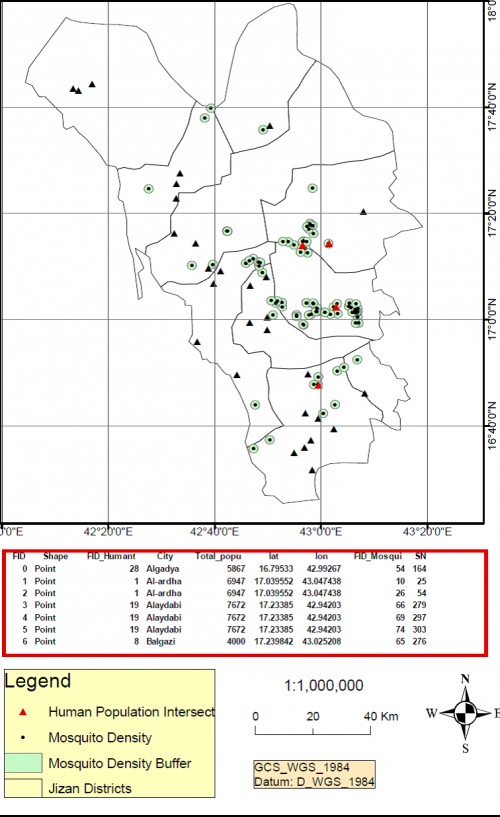Abundance and spatial distribution of Culex and Aedes mosquitoes as potential vectors of rift valley fever in Jazan region
Author(s): Moataz Alhaj, Ghanem Aljidhean, Abdel Aziz Almanae, Mohamed Abdalla and Hassan Muhanna
Abstract: The mosquito and Sandfly fauna of Jazan region-Southwest Saudi Arabia were investigated to identify the density and the geographic distribution of potential vectors of Rift Valley Fever Virus (RVFV), as part of ongoing control program against RVF during inter-epizootic period. Overall, 128190 mosquito females, 3229 Phlebotomine sandflyies and 2018 Culicoides were collected from 18 October 2015 through 4 Sep 2016, by using a carbon-dioxide (dry ice)- baited light traps. All samples were morphologically identified at genus level and frozen at -80 before submitted to the reverse transcription polymerase chain reaction (RT-PCR) assay to investigate the likely circulation of RVFV in mosquitoes. Among the collected mosquitoes, Culex species was consistently the predominant mosquito, ranged from 98.13% to 99.26% in Sabia and Abuareesh respectively. While, phlebotomus sandflies, were found sporadically distributed in all districts with high relative abundance in Bulgazi (5.6%). Interestingly, all samples tested by RT-PCR were reported as negative for RVFV. In light of the reported results, conducting more spatio-temporal distribution of mosquitoes based on species identification should be considered in future studies towards implementing more effective control measures against mosquito-borne diseases.
 Fig.:
Fig.: intersection between Human population and Mosquito
How to cite this article:
Moataz Alhaj, Ghanem Aljidhean, Abdel Aziz Almanae, Mohamed Abdalla, Hassan Muhanna. Abundance and spatial distribution of Culex and Aedes mosquitoes as potential vectors of rift valley fever in Jazan region. Int J Mosq Res 2017;4(6):42-47.



